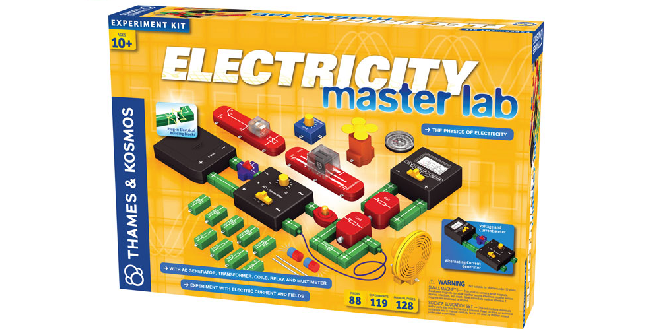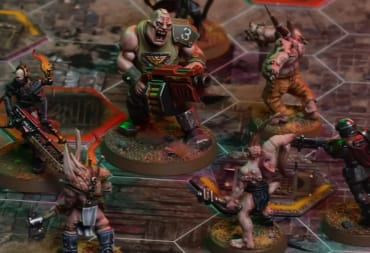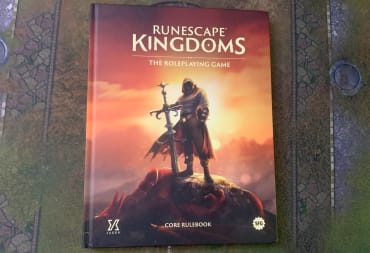The Electricity and Magnetism (E&M) kit from Thames and Kosmos took me pleasantly by surprise last year. The kit was educational, not only for my 9 year old son, but for me as well, and it was a ton of fun. The 60 or so experiments built off one another logically, and it did a good job of making learning, especially the "a-ha!" moments, feel organic and interesting, and it laid a solid foundation for deeper study of electricity and magnetism, as well as piquing my son's interest in learning more about the topics it covered.
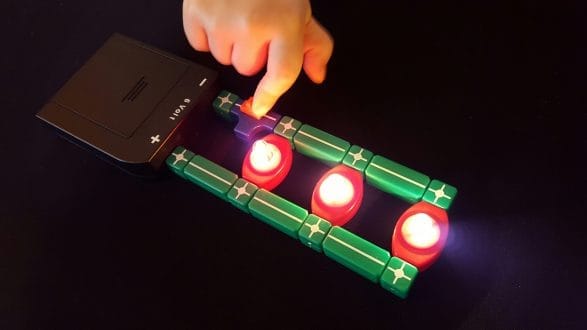
The E&M kit just scratched the surface compared to the Electricity Master Lab though. With nearly double the number of experiments, and more complex, although still easy to use, components, it takes learning about electricity, magnetism, and electrochemestry to the next level. Be aware, this kit is more tool than toy. Quite a few of the experiments require more precision, especially in component placement when polarity is concerned, meaning the Master Lab is a more serious, and deliberate, kit than the E&M kit. This means that it's not as good for kids 10 and under to use on their own as the E&M kit is, but it is a great choice for kids whose interest and desire to learn more, and more complex ideas, has been sparked by the E&M kit. There is still a lot of fun to be had with the Master Lab, especially as an activity to be shared between parent and child, or teacher and students, but it is more about the satisfaction of increased knowledge than play-fun.
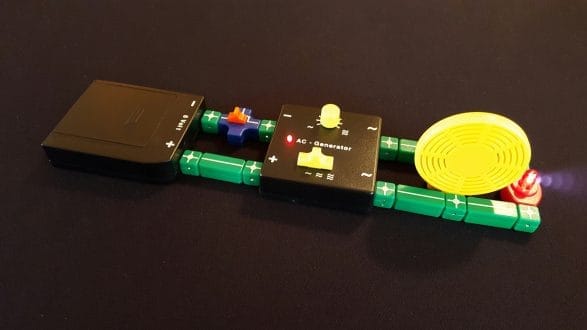
The Electricity Master Lab has quite a few early experiments that are similar to the basic experiments in the E&M kit, yet adds a few new twists, such as testing various different materials for conductivity, and introducing some of the new components that weren't in the E&M kit. Like the E&M kit before it, the Master Lab also has interesting educational sections between each set of experiments that gives a deeper look into exactly what the experiments in that section were demonstrating.
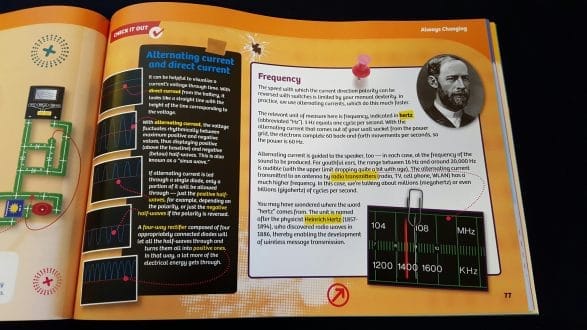
The second series of experiments revolve around measuring current flow using a voltage meter. Many of these experiments have the potential to damage the voltage meter if you aren't careful. These experiments use the meter to demonstrate the effects of resistors, and potentiometers, including some really interesting examples using, combining, and replacing resistors of various resistance. While these experiments are interesting and very educational, some of the math involved can be a bit too complex for younger kids to fully understand. This section includes a great explanation of Ohm's law though, so, for older kids who can fully grasp the mathematical concepts, this is a great way to prove a mathematical formula with real world, measurable, and reproducible results.
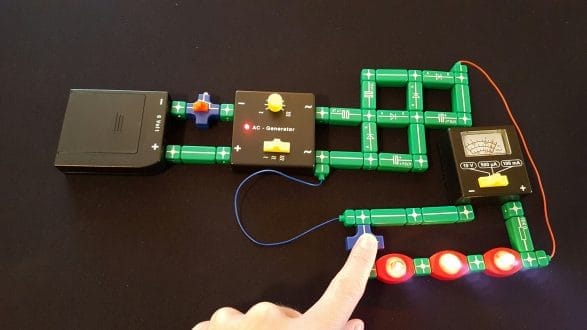
The magnetism experiments in the Electricity Master Lab are very similar to those found in the E&M kit, and include the experiment that shows the magnetic field using the box of iron powder that was such a hit with my son in the E&M kit. The rest of the magnetism experiments, especially those in the Electric Current and Magnetism section, trend more towards the academic. Instead of the simpler, but fun, builds from the E&M kit, such as the button operated electromagnet, these experiments explore electricity's effects on magnetism in various ways, such as running current through a coil, and various experiments with a relay. Some of the relay experiments require quite complex builds that can be a fun challenge to put together.
The experiments in the later sections get more complex still, and were too complex for my 9 year old son to really grasp. They focus on alternating current, capacitors, and transformers. One of the highlights in the alternating current section was the experiment that used the AC Generator to create a Morse telegraph. The experiments come to a close with a section on electrolysis and how electricity can be used in chemistry.

The Electricity Master Lab is aptly named. Where the Electricity and Magnetism kit is a fun kit to play with, pique interest, and learn a few things, the Electricity Master Lab is a serious learning tool. It does an excellent job of teaching the basics before launching into some seriously complex concepts in ways that are well explained, well thought out, and build upon the previous experiments logically. The more complex experiments require caution and can be too complex for younger kids, but older kids, or even younger adults who are interested in working with electricity, will find that the Electricity Master Lab is a great tool for increasing their knowledge of some of the more complex inner workings of electricity. I used to work building black boxes for airplanes and I learned many of the same concepts taught in the Electricity Master Lab from textbooks, and this kit teaches those concepts in a way that is far easier to grasp. If you really want to learn about electricity, or you are looking for an excellent tool to help teach others about it, this kit is a great investment.
The copy of Electricity Master Lab used for this review was provided by Thames and Kosmos.
Review Summary
The Electricity Master Lab is a great educational tool. There is a plethora of knowledge in store for adults and teachers who want to help grade school kids through the experiments. It is robust enough to be of value to older kids, as well as adults, who may be interested in gaining a deeper understanding of the inner workings of electricity.
(Review Policy)Have a tip, or want to point out something we missed? Leave a Comment or e-mail us at tips@techraptor.net
